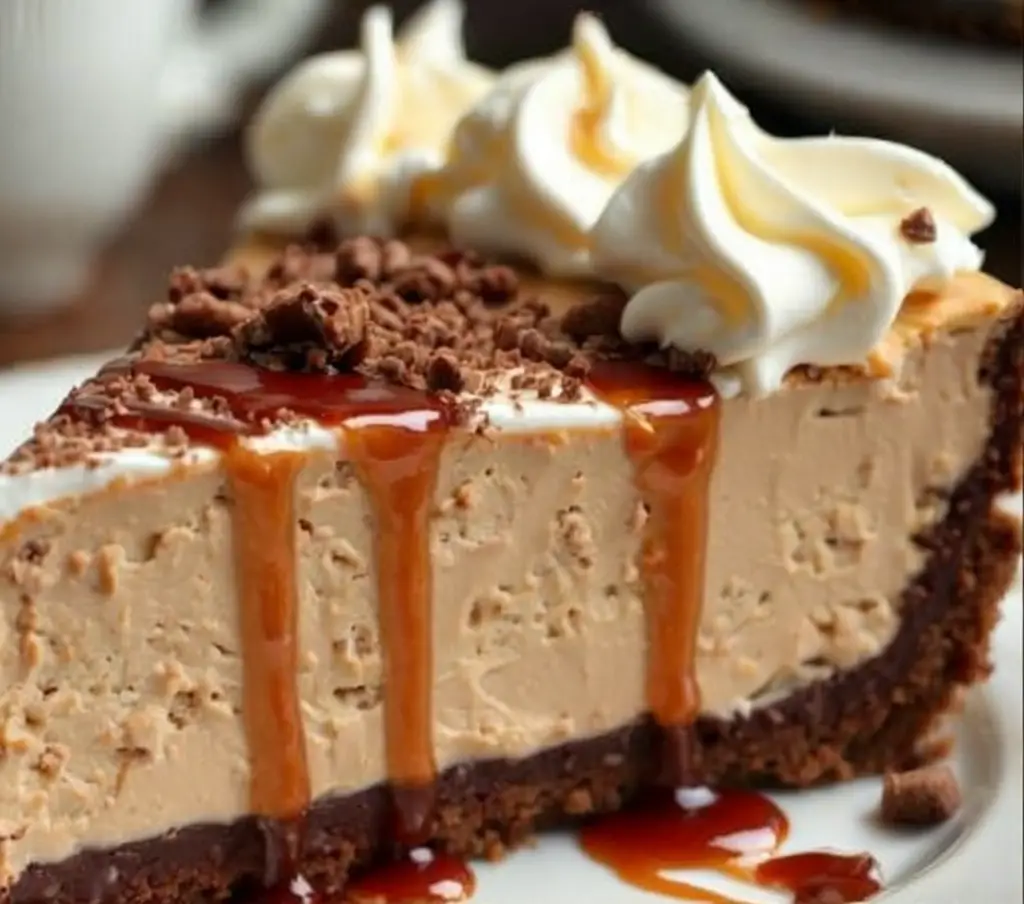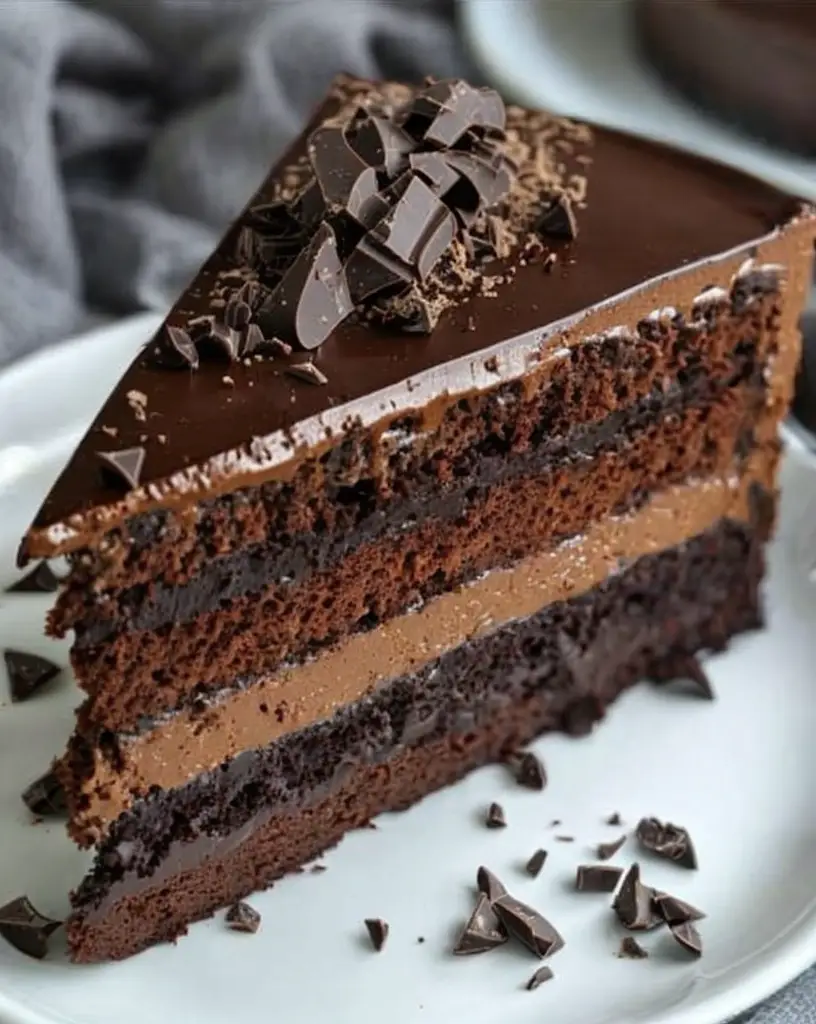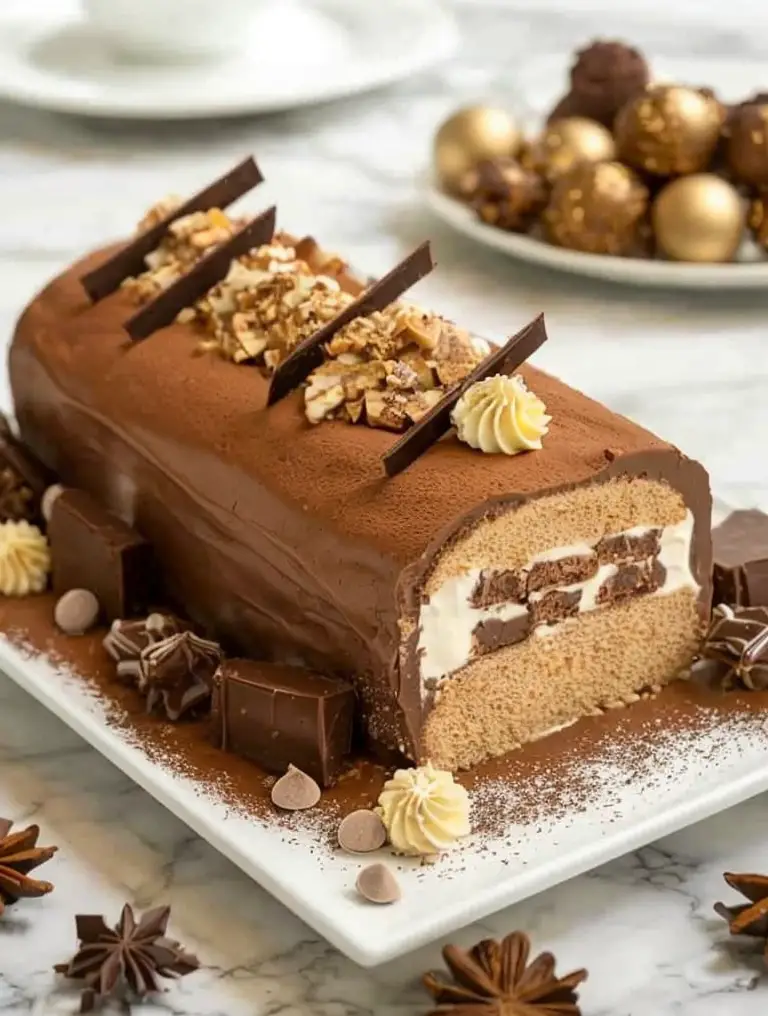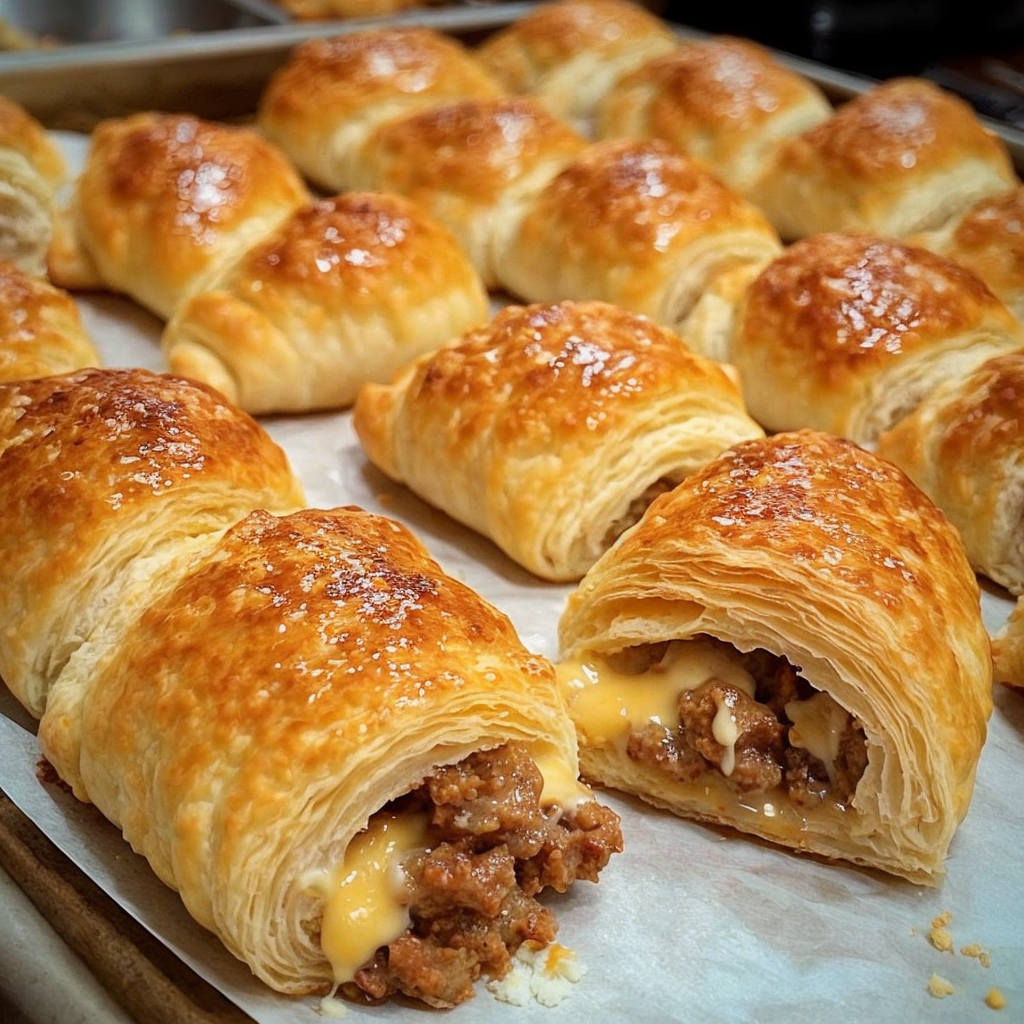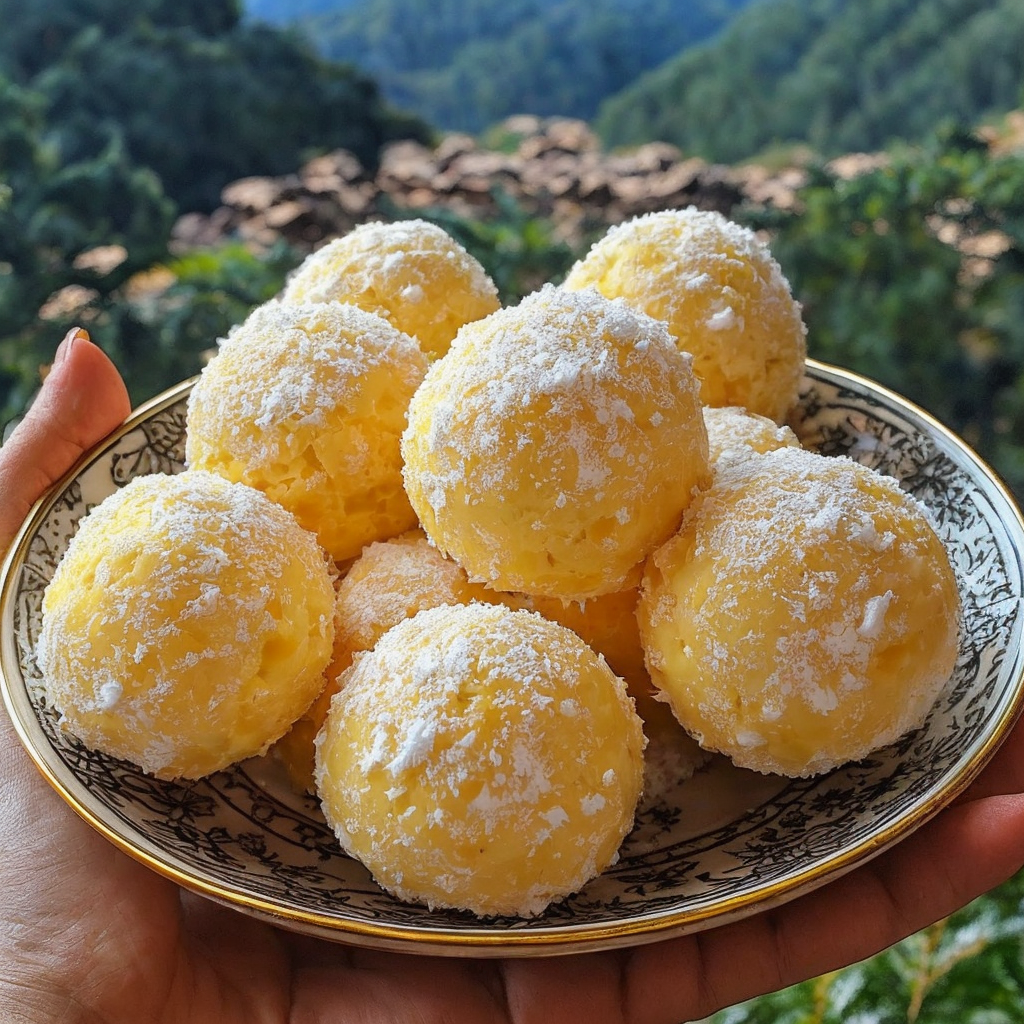Decadent Snickers Cheesecake Pie: A Sweet Indulgence
Satisfy your sweet tooth with our utterly Decadent Snickers Cheesecake Pie, a recipe that combines the creamy richness of cheesecake with the irresistible flavors of a Snickers bar. This delightful dessert blends a crunchy chocolate crust, a luscious cheesecake filling, and a rich caramel topping, making it a truly show-stopping treat. Perfect for any occasion, this cheesecake pie will impress your family and friends with its decadent taste and enticing presentation.
Prepare to be mesmerized by the sensory experience of indulging in a slice of this creamy delight. The smooth, velvety texture of the cheesecake, combined with the crispness of the chocolate crust and the gooey caramel layer, creates a perfect balance of flavors and mouthfeel. Each bite offers a burst of sweet and salty notes, thanks to the addition of chopped Snickers bars. The aroma of melted chocolate and caramel will fill your kitchen, making the anticipation hard to resist.
Quick Recipe Highlights
- Flavor Profile: A perfect harmony of sweetness from caramel, chocolate richness, and a hint of nuttiness from peanuts.
- Texture: Creamy and smooth cheesecake filling with a crunchy chocolate base and gooey caramel top.
- Aroma: An intoxicating scent of chocolate and caramel that will fill your kitchen space.
- Visual Appeal: A beautifully layered dessert that’s as pleasing to the eye as it is to the palate.
- Skill Level Needed: Medium, with steps involving some baking techniques that require attention to detail.
- Special Equipment: Springform pan, food processor, electric mixer.
Recipe Overview
- Difficulty Level: Medium. The recipe involves creating a layered dessert, which requires precision but is achievable even for a determined beginner.
- Category: This pie falls under desserts and sweet treats, perfect for after-dinner indulgence.
- Cuisine: A modern American twist that blends classic cheesecake with popular candy bar flavors.
- Cost: Moderately priced, as it involves purchasing specific branded chocolate bars and cream cheese.
- Season: An all-season favorite, this dessert is great for any time of year.
- Occasion: An ideal choice for celebrations, casual get-togethers, and even as a festive holiday dessert.
Why You’ll Love This Recipe
The Decadent Snickers Cheesecake Pie is not just a visual delight but a treat to all senses. Taste-wise, it captures the essence of a Snickers bar while taking it to a new level with the creamy cheesecake layer. The texture is perfectly balanced, with a base that provides a satisfying crunch against the creamy filling and smooth caramel. Its preparation might seem sophisticated, but fear not, as this recipe is designed for convenience with step-by-step instructions that make the process enjoyable.
Nutritionally, this dessert offers a balance of indulgence with some nutritional elements from the peanuts and cheese, permitting you a guilt-free treat in moderate servings. This pie is also a great centerpiece for social gatherings and entertaining, sure to prompt compliments and conversations. Finally, it’s cost-effective due to its ability to serve a crowd, making it an accessible choice for bakers of all levels.
Historical Background and Cultural Significance
Originating from the classic American culinary tradition of blending candies and baked goods, this cheesecake pie integrates the beloved taste of Snickers. Candy-infused desserts have long been a staple in modern American cuisine, seen as a way to elevate traditional recipes with an innovative twist. Over time, this recipe evolved to become a cherished treat, with numerous adaptations appearing in cookbooks and online culinary platforms.
The cultural impact of this recipe can be traced back to America’s love for candy bars and cheesecakes, representing a blend of comfort and indulgence in one dish. Regional variations might incorporate local sweets or adaptations to the crust using native grains. Overall, the Decadent Snickers Cheesecake Pie maintains its status as a beloved, decadent treat in both professional kitchens and home bakeries.
Ingredient Deep Dive
The primary ingredient in this tantalizing dessert is, of course, the Snickers bars. Known for their rich combination of peanuts, caramel, and nougat coated in milk chocolate, Snickers bars are a staple in American candy culture. They add not only flavor but also texture, with their nutty, chewy consistency contributing to the overall experience of the pie. When selecting these bars, ensure they are fresh and stored in a cool environment to maintain their quality.
Complementing the Snickers bars is the cream cheese, providing the creamy base of the cheesecake filling. Opt for full-fat cream cheese for optimal richness, and allow it to come to room temperature before using to facilitate smooth mixing. For storage, keep unopened cream cheese refrigerated and sealed to prevent spoilage. If you’re looking for substitutes, Neufchatel cheese can offer a lower-fat alternative with a slightly tangy flavor.
Common Mistakes to Avoid
- Using cold cream cheese. Always let it reach room temperature to ensure a smooth, lump-free filling.
- Overmixing the batter, which can lead to a dense cheesecake. Mix just until ingredients are combined.
- Skipping the water bath can cause cracks in the cheesecake. This step ensures even cooking.
- Not chilling the pie adequately. Allow sufficient time to set for the best texture.
- Cutting into the cheesecake too soon. Wait for the recommended chill time for clean, neat slices.
- Using a dull knife, which can ruin presentation. Always use a sharp knife for slicing.
- Forgetting to cover and store leftovers properly, which can cause drying out or absorption of fridge odors.
- Over-baking the crust, which can become too hard. Follow the recommended baking times closely.
Essential Techniques
Achieving the perfect cheesecake texture involves several key techniques. One critical method is the use of a water bath, which prevents the cheesecake from drying out or cracking. The gentle, moist heat evenly cooks the cheesecake, maintaining its smooth and luscious texture. It’s essential to tightly wrap the springform pan in foil to prevent water from seeping in.
Mastering the art of mixing is another crucial skill. Avoid overbeating the cream cheese and eggs, which can incorporate too much air and result in a crumbly or cracked cheesecake. Mix just until combined for the best texture. When baking, keep an eye on visual cues; a slight jiggle in the center of the cheesecake indicates it’s perfectly cooked.
Pro Tips for Perfect Decadent Snickers Cheesecake Pie
Ensure all ingredients are at room temperature for easier blending and a smoother batter.
Invest in a high-quality springform pan to avoid leaks and ensure easy removal of the cheesecake.
Don’t rush the cooling process; allow the cheesecake to cool at room temperature before refrigerating overnight.
Use a sharp knife warmed under hot water for clean slicing of the cheesecake.
Add decorative swirls of caramel or chocolate sauce for an eye-catching presentation.
Consider adding a sprinkle of sea salt on top for a deliciously contrasting flavor.
Variations and Adaptations
Regional variations might see the use of local brands of chocolate or adaptations in the crust. Incorporating seasonal ingredients such as pumpkin spice in fall can offer a delightful twist. Dietary modifications can be made by using gluten-free cookie crumbs for the crust or dairy-free cream cheese alternatives for those with special diets.
For flavor variations, consider adding a splash of vanilla extract or swapping Snickers with other favorite candy bars. Texture modifications can include adding extra peanuts for more crunch or a layer of marshmallow fluff for an added gooey dimension. Presentation alternatives might embrace individual-sized mini cheesecakes for personal servings.
Serving and Presentation Guide
When it comes to presenting your Snickers Cheesecake Pie, garnishing is key. Consider a drizzle of warm caramel or chocolate sauce over each slice for an added layer of visual appeal. For garnishing ideas, sprinkle chopped peanuts or chocolate shavings as a finishing touch. Serve the slices on dessert plates that complement the pie’s rich colors, emphasizing its decadent layers.
Provide a clean slice to each guest, ensuring just the right portion size to savor its rich flavors without overwhelming. Temperatures play an important role; serve the cheesecake chilled for the best texture and taste experience. Engage guests with modern serving suggestions, perhaps coupling the dessert with a small scoop of vanilla ice cream or a dollop of whipped cream.
Wine and Beverage Pairing
Pair this delightful cheesecake pie with a dessert wine like a rich, nutty port or a slightly acidic Riesling that cuts through the sweetness. For non-alcoholic alternatives, consider a caramel-infused latte or a simple cold brew coffee to balance the rich flavors. For a lighter option, a fragrant peppermint tea could complement the dessert’s sweetness while aiding digestion.
When serving wine, be sure to chill white wines slightly before serving, while a room-temp port will emphasize its deep, lingering aromas. Proper portioning of drink pairings can also enhance and not overpower the delicate balance of flavors in the dessert.
Storage and Shelf Life
To store your Snickers Cheesecake Pie, wrap it tightly in plastic wrap or aluminum foil and refrigerate for up to five days. Keep the temperature consistent, ideally below 40°F, to maintain freshness. For longer storage, freezing is an option; simply wrap the cheesecake tightly, then place in a freezer-safe container. When ready to serve, thaw slowly in the refrigerator.
Be mindful of signs of spoilage such as off-smells or discoloration in the cheesecake. If reheating is necessary, do so gently using a warm water bath to maintain the texture. Always encourage serving the pie fresh to preserve its creamy consistency and overall dish integrity.
Make Ahead Strategies
To streamline your preparation process, consider making each layer of the cheesecake pie separately in advance. Start by preparing the crust and refrigerating it, allowing it to set firm. The filling can be mixed and added a day prior, ensuring all flavors meld beautifully overnight. Ensure quality is maintained by wrapping securely and chilling at all stages.
Reheating is seldom needed with this recipe; however, if necessary, use a gentle water bath to gradually warm the cheesecake to serving temperature. Adding fresh elements like caramel topping just before serving enhances the presentation and taste experience.
Scaling Instructions
This recipe can be halved for a smaller serving size, perfect for a more intimate gathering. Use smaller pans and adjust baking times by reducing by approximately one-third. Doubling the recipe for a larger group is achievable with the use of larger equipment and increased ingredient quantities, ensuring baking times are extended by 10-15 minutes. Always consider storage space for scaled-up versions and maintain careful attention to mixing to preserve the cheesecake texture.
Nutritional Deep Dive
The nutritional aspects of this cheesecake pie can be examined through its rich macronutrient content, primarily from fats and sugars. The nuts provide beneficial micronutrients such as magnesium and vitamin E. Consumed in moderation, this dessert offers a permissible indulgence with protein from the cream cheese offering some balance. Be aware of portion sizes, as this is a calorie-dense dessert, and consider sharing it as a celebration or occasional treat.
Dietary Adaptations
For those seeking dietary adaptations, accommodate gluten-free needs by using gluten-free cookie crumbs in the crust. Dairy-free modifications can involve using coconut cream cheese alternatives for the filling, although this may alter texture slightly. Those adhering to a low-carb lifestyle can opt for sugar substitutes and nut-based crusts to reduce carbohydrates, fitting within keto or Paleo guidelines. Allergens such as peanuts can be substituted with other nuts or omitted according to dietary requirements.
Troubleshooting Guide
Should your cheesecake experience texture issues like dryness or cracking, consider increasing moisture through a water bath or adjusting baking times. Balance any overly sweet flavors by choosing unsweetened cream ingredients or incorporating pinch salt. Monitor temperatures closely to avoid undercooking or overcooking; aim for a slight jiggle with firmness at the edges.
If equipment challenges arise, utilize food processors for efficient ingredient blending or use a manual mixer where electric options aren’t available. Timing concerns can be mitigated by preparing ingredients and tools ahead of time, ensuring you’ll complete steps with precision.
Recipe Success Stories
Many cooks have shared their positive experiences with our Decadent Snickers Cheesecake Pie, noting the delight it brings to family gatherings and celebrations. Photographic efforts have been complemented with inventive presentation styles across social media platforms, reinforcing its visual appeal. Readers have successfully adapted the recipe to personal tastes, often attributing their fondness to the versatile, crowd-pleasing nature of this dessert.
Frequently Asked Questions
Ensure a water bath is used to create an even cooking environment and avoid overbeating the filling.
Can I use a different candy bar?
Absolutely, feel free to substitute with your favorite bar, keeping in mind the balance of sweetness and texture changes.
What’s the best way to slice the cheesecake pie?
Use a hot, sharp knife, cleaning between each slice for the cleanest cuts.
How do I store the cheesecake once it’s made?
Store in an airtight container or wrap tightly in plastic, kept in the refrigerator.
Can this recipe be made gluten-free?
Yes, use gluten-free cookies for the crust to accommodate dietary needs.
What should I do if my crust is too hard?
Be cautious not to overbake; use less pressure when pressing the crust into the pan next time.
How long can this cheesecake be stored?
Properly stored, it can last up to five days refrigerated or a month in the freezer.
Is it possible to freeze this pie?
Yes, wrap in foil or plastic, then place in a freezer-safe bag or container.
Will using low-fat cream cheese affect the texture?
It may result in a less creamy texture; full-fat is recommended for the best results.
Can I make this in a regular pie pan?
A springform pan is recommended for easy release, but adjustments might work for a regular pie pan with careful monitoring.
Can I prepare this recipe ahead time?
Yes, prepare each step as described in the make-ahead strategies to save time without compromising quality.
Additional Resources
Explore our related desserts for more sweet inspirations, like the Chocolate Drizzle Cheesecake or Caramel Delight Bars. Gain technique insights through our cheesecake baking guides. Learn about ingredient substitutions and equipment setups to elevate your baking skills. Seasonal adaptations and presentation ideas abound in our culinary blog, where creativity meets delicious results.
Join the Conversation
Share your slice of our Decadent Snickers Cheesecake Pie on social media, tagging us with your unique variations or photogenic success shots. We’re eager to hear your reviews and personal touches added to this recipe! Engage with our community by commenting on others’ culinary attempts, making suggestions, and sharing tips for an ongoing exchange of baking wisdom.
The Recipe
Decadent Snickers Cheesecake Pie
Serves: 8 slices
Prep Time: 20 mins
Cook Time: 40 mins
Total Time: 60 mins
Kitchen Equipment Needed
- Springform pan
- Food processor
- Electric mixer
- Baking sheet
Ingredients
- 1 1/2 cups chocolate cookie crumbs
- 2 tbsp sugar
- 6 tbsp melted butter
- 24 oz cream cheese, softened
- 1 cup sugar
- 1 tsp vanilla extract
- 3 large eggs
- 1 cup chopped Snickers bars
- 1/2 cup caramel sauce
- 1/4 cup chopped peanuts (optional)
Directions
- Preheat the oven to 350°F (175°C). Wrap a springform pan in foil to prevent leaks.
- Combine cookie crumbs, sugar, and melted butter, pressing into the bottom of the pan to form the crust. Bake for 10 minutes and let cool.
- Beat cream cheese until smooth, then add sugar and vanilla. Mix until combined.
- Add eggs one at a time, mixing gently to incorporate. Fold in chopped Snickers bars.
- Pour the filling over the crust and smooth the top. Place the pan in a water bath in the oven.
- Bake for 35-40 minutes until the center is slightly jiggly but set around the edges.
- Remove from oven and cool at room temperature. Refrigerate at least 4 hours or overnight.
- Before serving, drizzle the top with caramel sauce and sprinkle with chopped peanuts if desired.
Recipe Notes
- Ensure cream cheese is softened for smoother mixing.
- For an extra garnish, consider adding chocolate shavings on top of the caramel.
- Experiment with different candy bars for variety in flavor.
